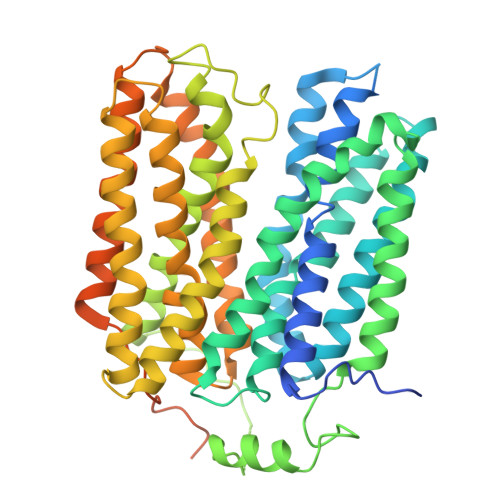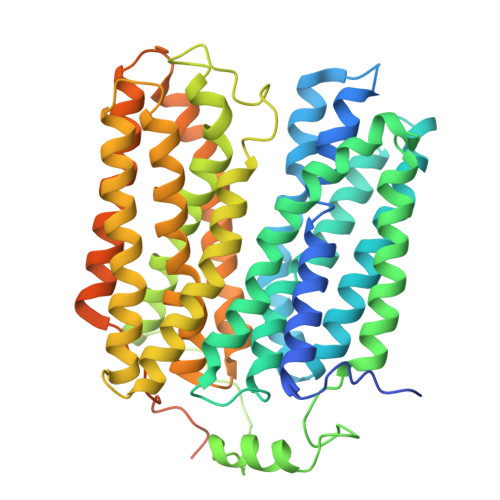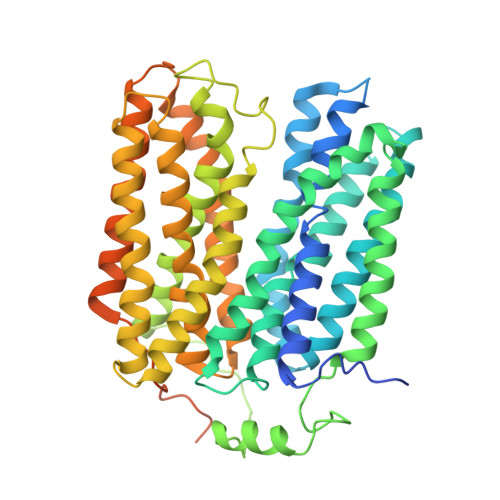Ion transport and regulation in a synaptic vesicle glutamate transporter.
Li, F., Eriksen, J., Finer-Moore, J., Chang, R., Nguyen, P., Bowen, A., Myasnikov, A., Yu, Z., Bulkley, D., Cheng, Y., Edwards, R.H., Stroud, R.M.(2020) Science 368: 893-897
- PubMed: 32439795
- DOI: https://doi.org/10.1126/science.aba9202
- Primary Citation of Related Structures:
8SBE - PubMed Abstract:
Synaptic vesicles accumulate neurotransmitters, enabling the quantal release by exocytosis that underlies synaptic transmission. Specific neurotransmitter transporters are responsible for this activity and therefore are essential for brain function. The vesicular glutamate transporters (VGLUTs) concentrate the principal excitatory neurotransmitter glutamate into synaptic vesicles, driven by membrane potential. However, the mechanism by which they do so remains poorly understood owing to a lack of structural information. We report the cryo-electron microscopy structure of rat VGLUT2 at 3.8-angstrom resolution and propose structure-based mechanisms for substrate recognition and allosteric activation by low pH and chloride. A potential permeation pathway for chloride intersects with the glutamate binding site. These results demonstrate how the activity of VGLUTs can be coordinated with large shifts in proton and chloride concentrations during the synaptic vesicle cycle to ensure normal synaptic transmission.
Organizational Affiliation:
Department of Biochemistry and Biophysics, University of California San Francisco (UCSF) School of Medicine, San Francisco, CA, USA.
















